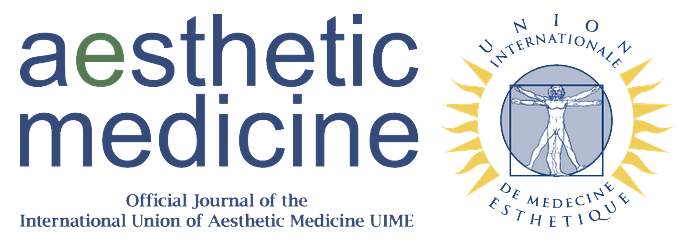Clinical-histological and immunohistochemical comparisons of vitiligo skin before and after a complex treatment using cell technologies
Keywords:
vitiligo, melanocytes, keratinocytes, immunohistochemistry, phototherapy, epidermisAbstract
Background. Vitiligo is an idiopathic disease characterized by the presence of depigmented patches as a result of a progressive melanocyte loss. Vitiligo is a significant psychological and social problem that can lead to a serious impairment of the patient's quality of life. To develop a comprehensive treatment method, we conducted clinical, immunological, and biochemical studies. The developed treatment method involved traditional therapy and UVB phototherapy, as well as cell technology methods such as melanocyte-keratinocyte suspension (MKS) and automezoconcentrate (AMC).
The objective of the study was to analyze the histological and immune-histochemical changes in the affected skin of vitiligo patients before and after the treatment and identify any differences based on gender.
Methods. An open comparative randomized clinical trial included 107 patients with ages 19-65, consisting of 45 men and 62 women. Morphological, immunohistochemical, and morphometric studies were performed on the affected skin. The patients were divided into two groups: the main group (56 patients) received a treatment according to the developed method, and the comparison group (51 patients) received the traditional treatment.
Results. The use of MKS and AMC in the treatment of vitiligo resulted in a decrease in the severity of epidermal dystrophic changes, recovery of melanocytes, and the reduction of dermal inflammatory infiltrate, as well as positive clinical results.
Conclusions. The comparative analysis of histological changes before and after the treatment showed that the use of MKS and AMC significantly expanded the possibilities and increased the effectiveness of vitiligo treatment strategies.
References
Bolognia JL, Schaffer JV, Cerroni L. Vitiligo and other disorders of hypopigmentation. Dermatology, 4th edition. 2018: 1250-61.
Salzes C, Abadie S, Seneschal J, et al. The Vitiligo Impact Patient Scale (VIPs): Development and Validation of a Vitiligo Burden Assessment Tool. J Invest Dermatol. 2016; 136(1):52-8.
Zhang Y, Cai Y, Shi M, et al. The Prevalence of Vitiligo: A Meta-Analysis. PLoS One. 2016; 11(9):e0163806.
Lomonosov КM, Gereichanova LG. Algoritm lecheniya vitiligo. Russian Journal of Skin and Venereal Diseases. 2016; 19(3):167-169.
Nargis Khan N, Sharique AA, Parveen N. The intricacies of vitiligo with reference to recent updates in treatment modalities. European journal of pharmaceutical and medical research. 2018; 5(02): 187-196.
Iannella G, Greco A, Didona D. et al. Vitiligo: Pathogenesis, clinical variants and treatment approaches. Autoimmun Rev. 2016; 15(4):335-43.
Mohammad TF, Hamzavi IH. Surgical Therapies for Vitiligo. Dermatol Clin. 2017; 35(2):193-203.
Mutalik S, Shah S, Sidwadkar V, Khoja M. Efficacy of Cyclosporine After Autologous Noncultured Melanocyte Transplantation in Localized Stable Vitiligo - A Pilot, Open Label, Comparative Study. Dermatol Surg. 2017; 43(11):1339-1347.
Tsepkolenko V, Karpenko K. Combined treatment of stable vitiligo using cell technologies. 24th World Congress of Dermatology, Milan, Italy: 2019 (poster presentation and abstract).
Tsepkolenko V, Karpenko K. Combined treatment of stable vitiligo treatment using autologous cultured melanocytes and keratinocytes suspension. 28th Congress of the European Academy of Dermatology and Venereology, Madrid, Spain: 2019 (poster presentation and abstract).
Sposib otrimannia kriolizatu trombocitiv ludini: patent 112536 Ukraine: MPK С12М 1/02, А61К 35/19, А61Р 7/02. No u 2016 05254; claim. 16.05.2016; publ. 26.12.2016, Bul. No 24.
Lahiri K, Malakar S. The concept of stability of vitiligo: a reappraisal. Indian J Dermatol. 2012; 57(2):83–9.
Benzekri L, Gauthier Y, Hamada S, Hassam B. Clinical features and histological findings are potential indicators of activity in lesions of common vitiligo. Br J Dermatol. 2012; 168(2):265–271.
Ezzedine K, Lim HW, Suzuki T, et al. Revised classification ⁄ nomenclature of vitiligo and related issues: the Vitiligo Global Issues Consensus Conference. Pigment Cell Melanoma Res. 2012; 25(3):1–13.
Downloads
Published
Issue
Section
License
Copyright (c) 2023 Vladimir Tsepkolenko, Kateryna Karpenko

This work is licensed under a Creative Commons Attribution-NonCommercial 4.0 International License.
This is an Open Access article distributed under the terms of the Creative Commons Attribution License (https://creativecommons.org/licenses/by-nc/4.0) which permits unrestricted use, distribution, and reproduction in any medium, provided the original work is properly cited.
Transfer of Copyright and Permission to Reproduce Parts of Published Papers.
Authors retain the copyright for their published work. No formal permission will be required to reproduce parts (tables or illustrations) of published papers, provided the source is quoted appropriately and reproduction has no commercial intent. Reproductions with commercial intent will require written permission and payment of royalties.

This work is licensed under a Creative Commons Attribution-NonCommercial 4.0 International License.





